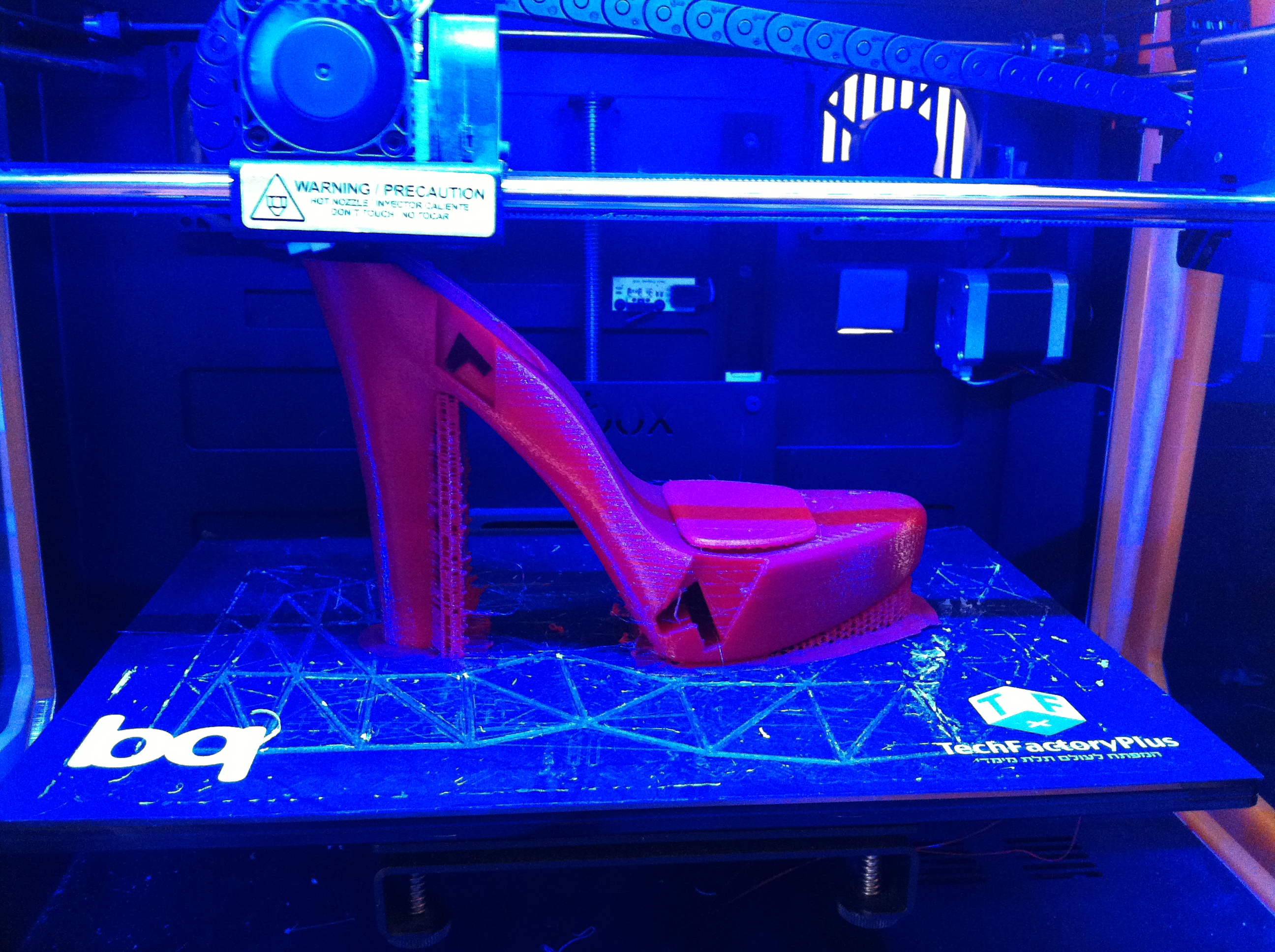Printed clothes coming to a home near you
• June 6, 2016

The 3D printed Liberté jacket by designer Danit Peleg. Photo: Supplied by Daria Ratiner
A leading 3D fashion designer says consumers will be able to print an outfit at home while they get ready to go out in the future, but further experimenting is needed.
During a 2015 Ted Talk, ‘Forget shopping, soon you will download your own clothes’, Israeli designer Danit Peleg said consumers will be able to buy designs online from fashion brands, download them to an at-home printer, and own a new garment in minutes.
Ms Peleg has created her first 3D printed fashion collection under her fashion label, a process which took over 2000 hours.
Ms Peleg’s signature red Liberté jacket took 300 hours to print, not to mention the time that went into ensuring the design was compatible with a 3D printer.
Because of the time needed to make each garment, Ms Peleg’s collection has a high price, with the red jacket costing around US$3000.
However, Ms Peleg said even with the time limitations, printing clothes is liberating.
“I felt so free and independent . . . I didn't have to go to the market and buy fabrics that [were] available at that moment. Instead I could just print them.”
Although previous printed fashion has been hard and scratchy, Ms Peleg used a flexible printer filament called FilaFlex to ensure her clothes were wearable for every day.
A plant-based filament, PLA, was also used for a more natural textile.
Ms Peleg printed the filament in a pattern by Andreas Bastian that she found online, which made the material feel like lace.
She printed pieces of her design on Witbox 3D printers and glued each garment together.
Ms Peleg said it is only a matter of time until cheaper, better printers and more wearable materials will be available on the market.
She said fewer costs and more personalisation are just some of the benefits to look forward to in the near future.

The printed shoes for Danit Peleg's first 3D runway show took 40 hours to print each. Photo supplied
With anyone able to print their own clothes, Ms Peleg said fashion will be less exclusive.
“Just like a viral video, you could see a ‘viral t-shirt’ that someone designed and that everyone is suddenly wearing.”
New Zealand designer Turet Knuefermann said she would “absolutely” be interested in 3D technology when it is developed further, especially if it stops wastage.
“It’s fantastic how things are changing. I test the latest fibres and I am positively impressed with what is available,” she said.
The creative director of Kiwi brand moochi, Kellie Taylor, said 3D printing is an interesting technology to watch.
“We’ll always be open to new and innovative ways of doing what we do, especially if there is a benefit for our customers.”
However, quality control is a concern for moochi.
“It’s difficult to imagine now how we would incorporate this practice into our production process as we’re still a very hands-on business . . . working with our garments intimately to control quality.”
“Anything is possible . . . but I don’t think it will happen anytime soon,” said 3D printer lab technician at AUT, Ross Jacobs.
He said fused filament fabrication (FFF) printers, such as the Witbox, jam easily as they need a clean path when they print.
Mr Jacobs said designers must consider a 3D printer’s limitations when designing the computer aided design (CAD) for each garment, but working together with printer engineers will help.
He added that a Selective Laser Snyder (SLS) is better because it uses a laser to fuse layers of powder together to make whole garments with less fuss.
Although the SLS is currently large and expensive, at-home 3D printers are already selling on Trade Me and stores such as Warehouse Stationery.
In the two and a half years Mr Jacobs has worked at AUT, he said he has seen hobbyist 3D printers come down in price from $2000 to $500.


‘Strong, proud and skilled' - Māori tradeswomen use social media to inspire other wāhine
Haley Doig • June 26, 2025




‘Strong, proud and skilled' - Māori tradeswomen use social media to inspire other wāhine
Haley Doig • June 26, 2025


